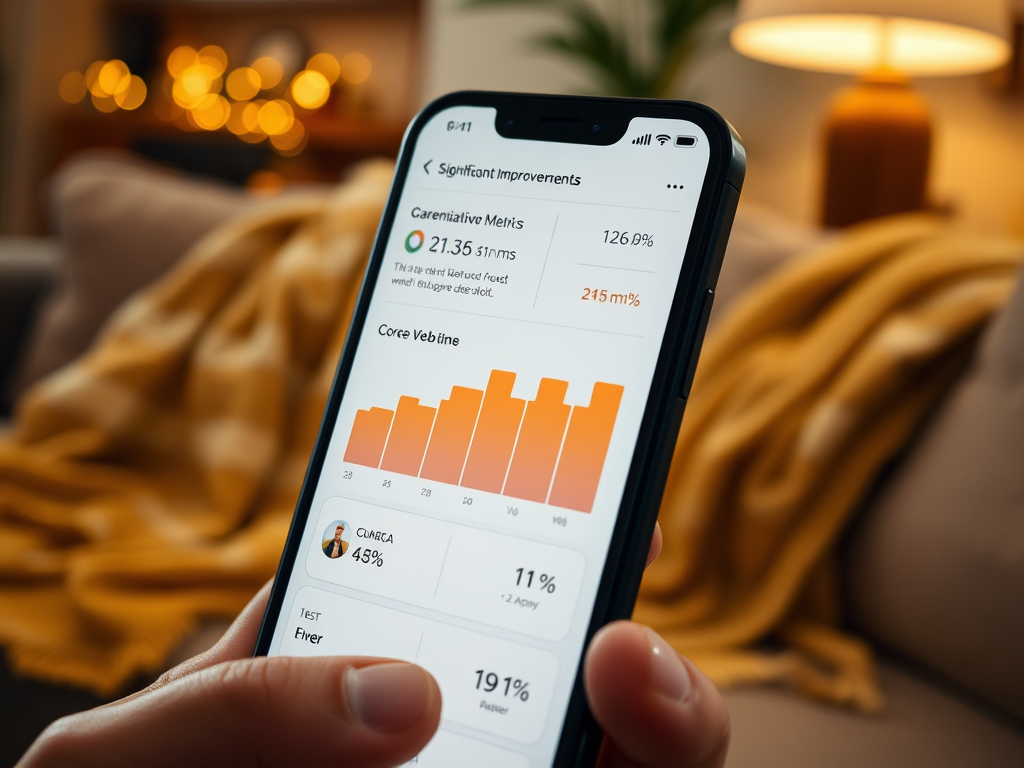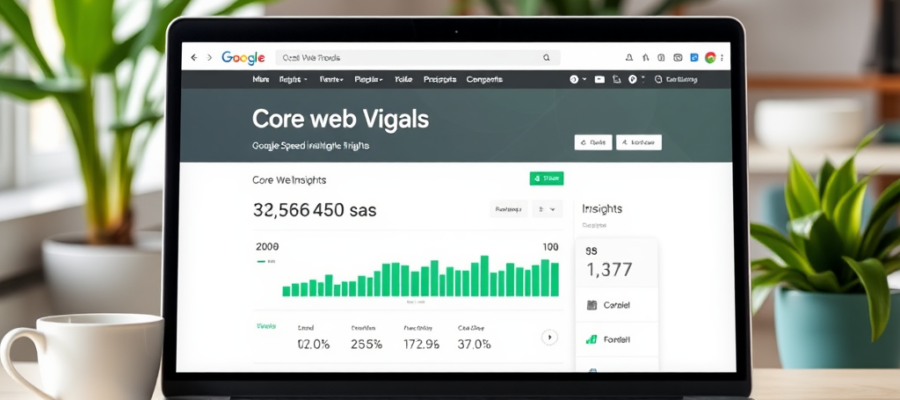In the rapidly evolving landscape of digital marketing, user experience has emerged as a pivotal factor for success. Whether you’re a seasoned web developer or a business owner trying to enhance your site’s performance, understanding Core Web Vitals is critical. These metrics serve as key performance indicators that directly affect how users interact with your website. They not only impact search engine rankings but also define the visitor’s journey in terms of speed and responsiveness. Therefore, mastering these elements can lead to significant improvements in user engagement and customer satisfaction. In this guide, we delve into the essentials of implementing Core Web Vitals, helping you to optimize your website for both search engines and users alike.
Core Web Vitals consist of three main metrics: Largest Contentful Paint (LCP), First Input Delay (FID), and Cumulative Layout Shift (CLS). Each of these metrics quantifies a specific aspect of user experience, measuring loading performance, interactivity, and visual stability. LCP evaluates how quickly the main content of a page loads; FID gauges the delay before a user can interact with a page; while CLS assesses the visual stability of a webpage. Collectively, these metrics paint a complete picture of the user experience on your website. Achieving optimal scores in these areas has become essential for anyone seeking to improve their search engine optimization (SEO). Let’s explore the importance of Core Web Vitals in detail.
The Importance of Core Web Vitals in SEO

The significance of Core Web Vitals cannot be overstated. A clear understanding of these metrics can lead to a more competitive edge in the market. Search engines like Google increasingly prioritize page experience, which is largely determined by these performance metrics. By focusing on improving your Core Web Vitals, you’re not just enhancing SEO; you’re also enriching user experience. Better scores can lead to higher click-through rates (CTR) and lower bounce rates. Ultimately, this translates to more sustained user engagement and often, higher conversion rates.
When users encounter a sluggish website, their patience wears thin quickly. That’s why addressing Core Web Vitals is paramount; it directly correlates to user satisfaction. Enhanced user experience fosters loyalty, encourages repeat visits, and amplifies word-of-mouth referrals. Moreover, websites that load quickly and display content seamlessly are more likely to retain visitors, contributing to lower bounce rates. Users expect a fluid experience, and meeting these expectations can make or break your online presence. The ripple effects of improved engagement ultimately contribute to your growth and success.
Measuring Core Web Vitals

Effectively measuring and analyzing Core Web Vitals is the first step in optimizing your website’s performance. Fortunately, several tools are available to assist with this vital task. Google PageSpeed Insights is a popular choice, providing a detailed breakdown of your site’s performance across both mobile and desktop. Lighthouse offers an in-depth audit of various performance aspects, including Core Web Vitals. For a more comprehensive view, the Chrome User Experience Report collates real-world data from actual users. By using these tools, you can identify specific areas for improvement.
Once you’ve measured your Core Web Vitals, understanding the results is crucial. Each metric has a specific threshold that delineates good performance from poor performance. For example, an LCP of below 2.5 seconds is considered good, while a FID of less than 100 milliseconds indicates an optimal experience. The following table summarizes these performance metrics and their respective benchmarks:
| Metric | Threshold | Description |
|---|---|---|
| Largest Contentful Paint (LCP) | Less than 2.5 seconds | Measures loading performance |
| First Input Delay (FID) | Less than 100 milliseconds | Measures interactivity |
| Cumulative Layout Shift (CLS) | Less than 0.1 | Measures visual stability |
Knowing these thresholds allows you to set specific goals for your optimization efforts. Once datasets are in hand, it’s essential to drill down to find the root causes of poor performance. By using the insights gained, you can implement targeted changes to elevate your site’s metrics.
Enhancing Largest Contentful Paint (LCP)
Improving LCP is vital for ensuring that users see the most significant elements of your page as soon as possible. One effective strategy is to optimize your server response time. This can be accomplished by investing in a better hosting provider or employing caching mechanisms. Additionally, prioritizing the loading of important resources—such as CSS and media—can significantly help in speeding up LCP. For instance, optimizing images and leveraging browser caching can dramatically impact load times. Consider implementing the following techniques to enhance LCP:
- Utilizing lazy loading for images and videos
- Reducing server response times
- Minimizing render-blocking JavaScript and CSS
Reducing First Input Delay (FID)
A low FID score is crucial for a responsive web experience. Users expect immediate actions to be registered on webpages, so optimizing JavaScript execution becomes increasingly key. Ensure that scripts are loaded in a manner that doesn’t block the main thread. This can significantly reduce delays. Furthermore, consider breaking up long tasks into smaller chunks to enhance responsiveness. Here are key strategies that can help improve FID:
- Optimizing JavaScript execution
- Increasing the responsiveness of your server
- Breaking up long tasks into smaller chunks
Minimizing Cumulative Layout Shift (CLS)
Addressing CLS is essential for maintaining a stable visual experience for users. Unexpected layout shifts can frustrate users, especially during interactive sessions. To minimize this, ensure that you define size attributes for all images and videos. This will prevent sudden changes when media content loads. Additionally, avoid layout shifts from dynamically injected content by using CSS placeholders and reserving space for ads or other third-party elements. Below are effective approaches for reducing CLS:
- Defining size for images and videos
- Avoiding layout shifts from dynamically injected content
- Utilizing reserved space for ads and other third-party elements
Best Practices for Continuous Monitoring
Once you’ve made the necessary optimizations, continuous monitoring becomes essential. Setting performance budgets can help you maintain the standards you’ve established. Additionally, regularly using monitoring tools can offer insights into long-term trends and highlight any detrimental shifts in user experience. This proactive approach ensures that your website continues to perform well, even as you introduce new content or features. Make it a habit to revisit your Core Web Vitals periodically, allowing you to stay ahead of the curve in an ever-competitive landscape.
Итог
Continuously prioritizing Core Web Vitals is paramount for achieving SEO success and ensuring an impeccable user experience. As the digital arena becomes more saturated, excelling in these performance metrics can set you apart. Ongoing performance reviews and adjustments based on analytics will fortify your site’s standing in search rankings. Investing in these improvements is not just a one-time effort but a sustained commitment to excellence. By focusing on your Core Web Vitals, you’re not just improving a score; you’re creating a more enjoyable and engaging environment for your users.
Часто задаваемые вопросы
- What are Core Web Vitals?
Core Web Vitals are a set of specific factors that Google considers important in a webpage’s overall user experience. - Why are Core Web Vitals important for SEO?
Because they directly affect user experience, which can influence search rankings. - How can I measure my website’s Core Web Vitals?
You can utilize tools like Google PageSpeed Insights, Lighthouse, or the Chrome User Experience Report. - What are common issues that affect LCP?
Common issues include slow server response times, large images, and render-blocking files. - How can I improve my site’s FID?
Improving FID involves optimizing JavaScript and breaking up long tasks to maintain responsiveness. - What is considered a good CLS score?
A good CLS score is below 0.1; anything above indicates that layout shifts are significant enough to disrupt user experience.
